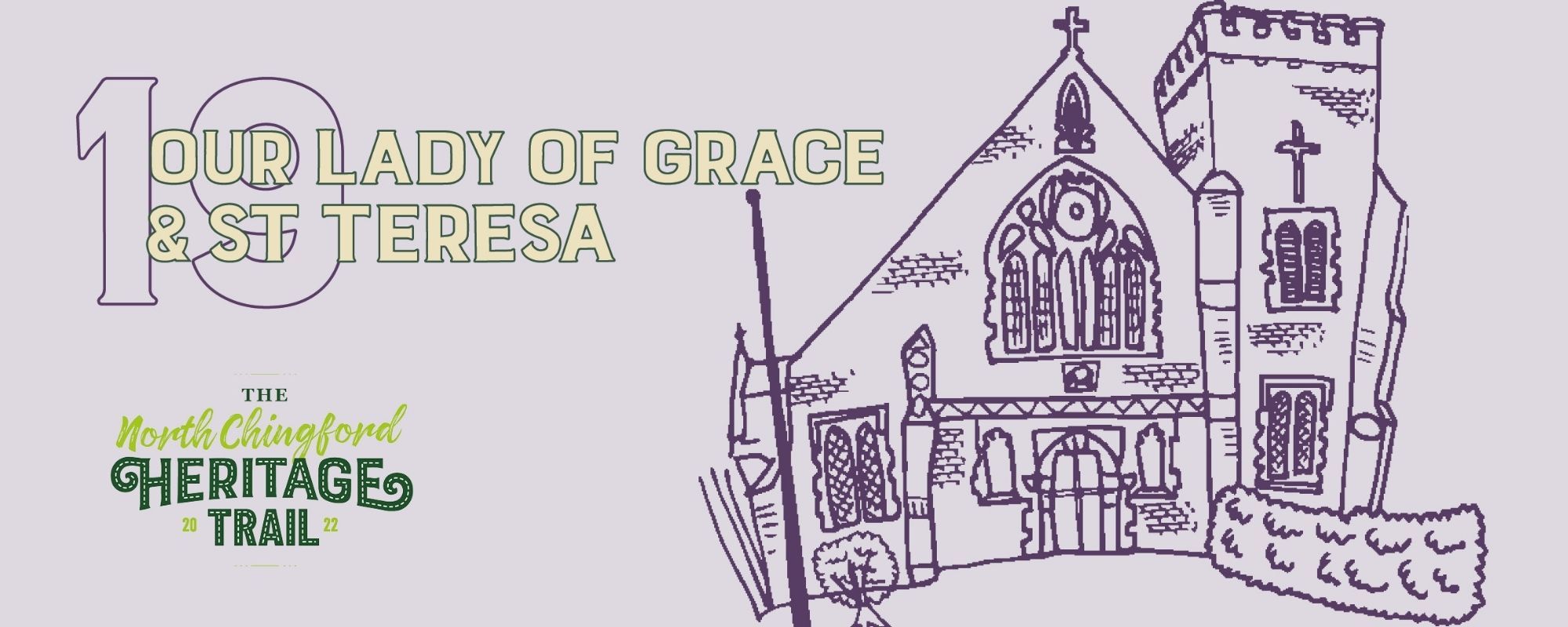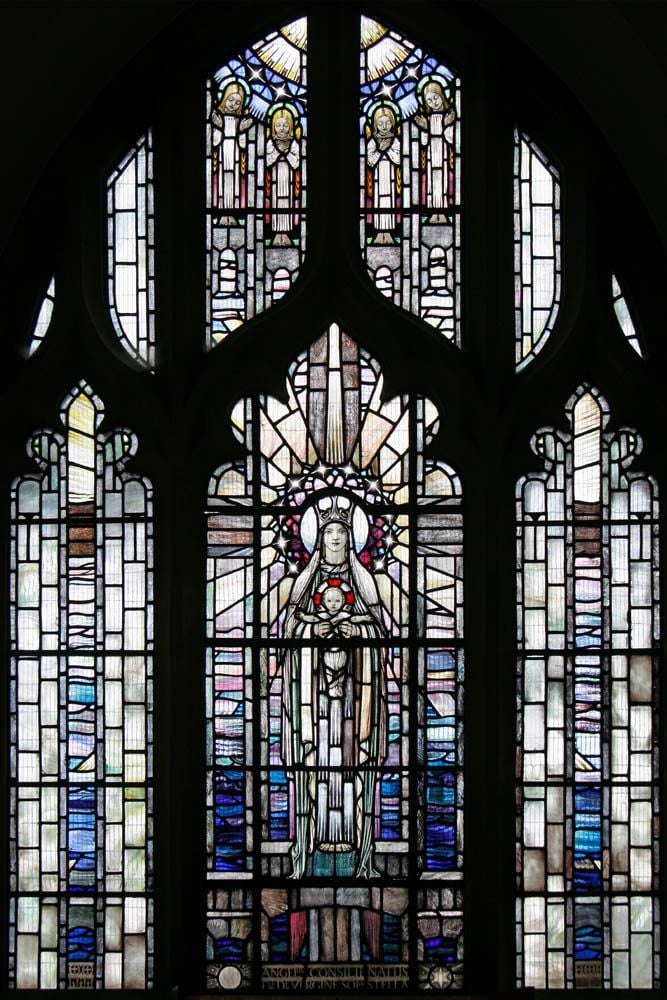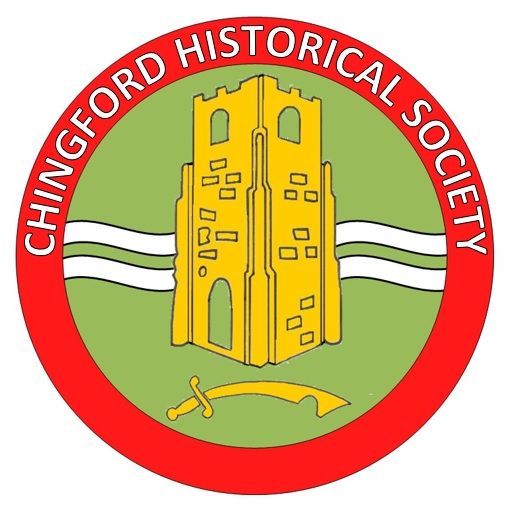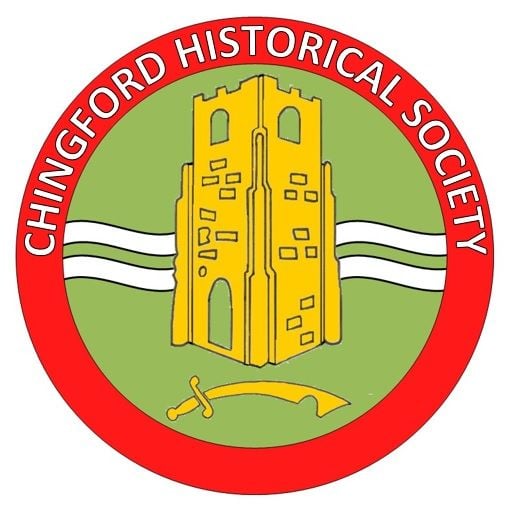
A late church in the Arts & Crafts tradition, built in 1931 with additions of 1939 and 1955-56.
In 1914 the Roman Catholic Church was re-established in Chingford after 400 years, but it was not until 1926 that a building fund was started for a permanent Church and it took four years to acquire enough money to start building. The site was the former butcher’s shop of Mr Bartrip senior. The original flagstones in the Presbytery were from the floor of the shop. A large smooth stone just inside the gates was a step in the shop.
In 1930 when the foundations were being dug the old railway bridge over King’s Road was being
demolished and Fr Howell was able to obtain 12 lorry loads of old bricks for the cost of cartage only and these went into the foundations.
The foundation stone for the present church was laid by Bishop Doubleday on 4 October 1930. The nave and a temporary sanctuary were opened by the Bishop on 7 June 1931. The parish church was largely completed by 1931, made possible by the immense generosity of some in the parish, and built in the ‘Arts and Crafts’ tradition made famous by William Morris.
On 12 March 1939 the site of the permanent Church was blessed and the building of the Sanctuary and Transepts began the next day. On 3rd December 1939, the permanent Church opened in the presence of the Mayor and Councillors.
The cost of the church was £5500 most of which came from generous congregation donors, including Edward Eyre. The builder and architect for church and presbytery was George W. Martyn of Chingford. Martyn designed and built the church at cost of labour and materials, i.e. without profit, as an offering of thanks for his reception as a Catholic. The tower was then added in 1955-56.
The two sconces to the front entrance represent Alpha and Omega (beginning and end). The Cross Keys and Tiara of Papal Arms are in Weldon stone. The statue of Our Lady below the apex of the front facade is in Ketton stone.
The timber of the South Porch is English oak carved by Don Porter; the inscription commemorates the work of the builder. The base of the Cross above the porch door rests on a piece of stone from the old Abbey of Glastonbury. Gutters and rainwater pipes are of cast lead. Various fittings were made by Kentish craftsmen. The Rose Window above the High Altar survived bombing during World War II.

DID YOU KNOW?
A campaign by the church for a school to be built next door was realised when the then, board of education sanctioned the build and St Marys school was opened on 24th June 1934.



